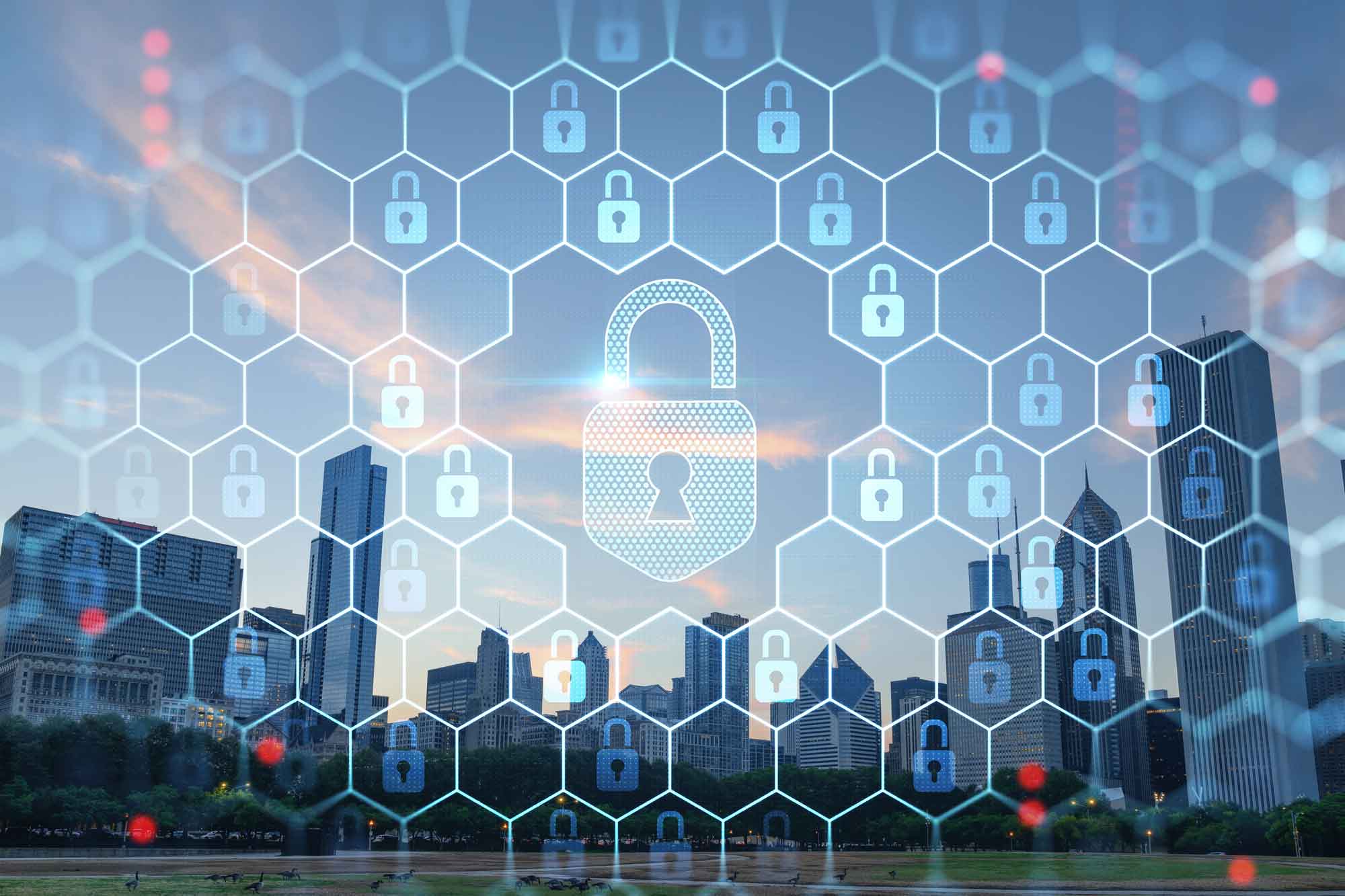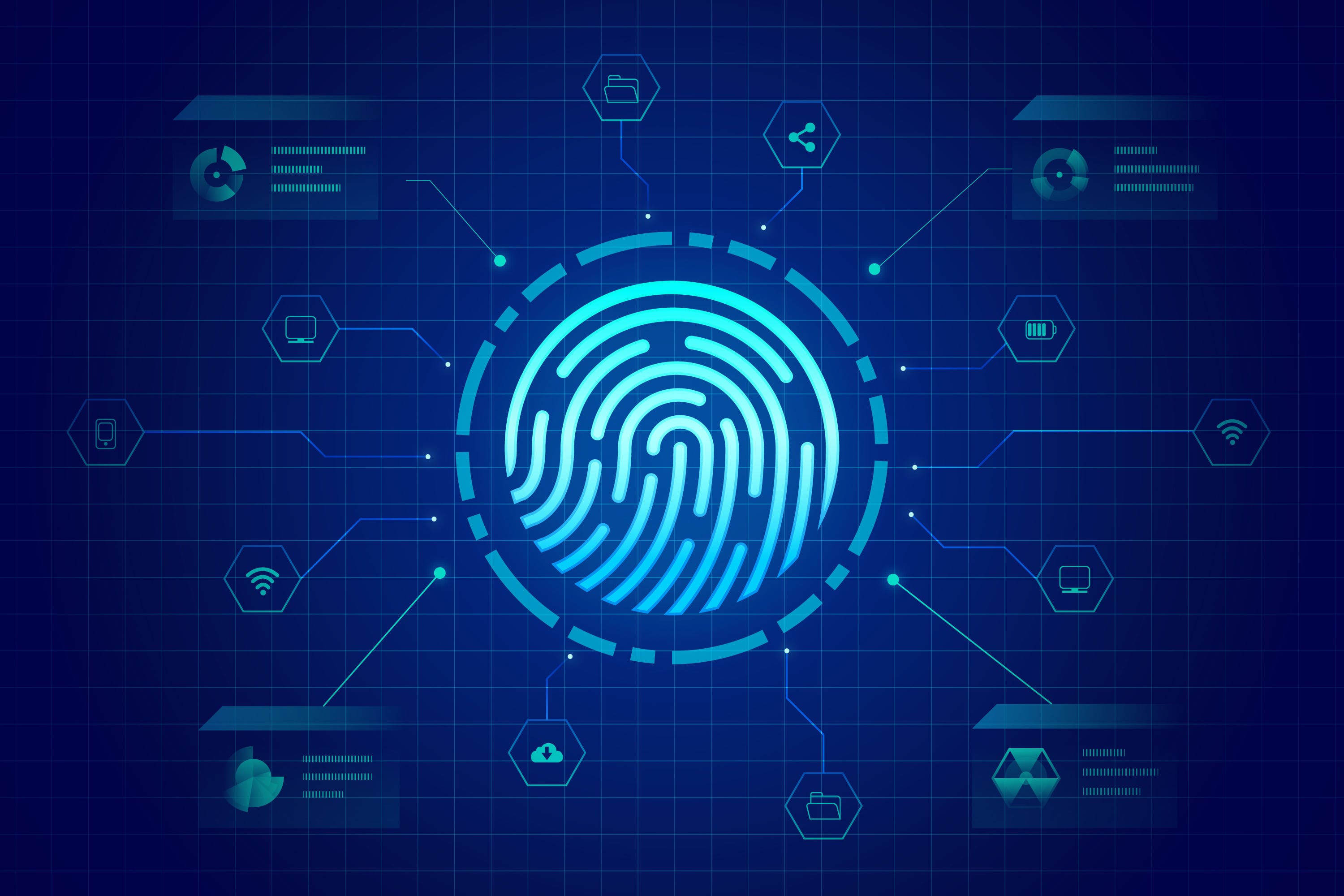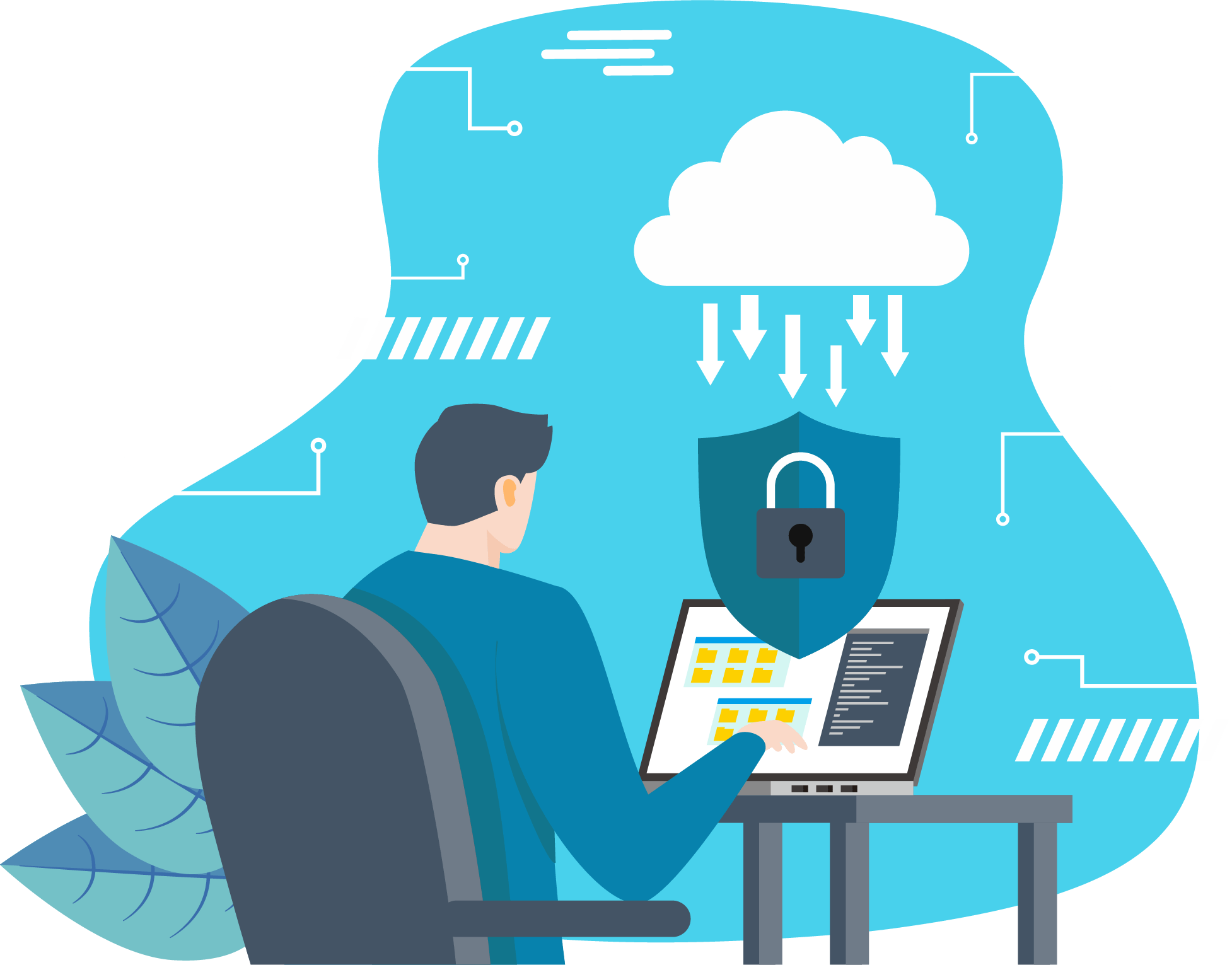Cyber security is one of the most crucial topics in today's digital age. As technology advances, so do hacking methods to infiltrate networks and steal sensitive information. This point is why businesses must take proactive steps to reduce cyber security risks either with the help of their internal IT teams or a cyber security service company.
How to Reduce Cyber Security Risks
Cyber security awareness among teams
Phishing is one of the most common tactics hackers use to infiltrate your systems. Phishing usually comes in emails or SMS texts containing malware in the form of links or attachments. There are billions of these sent yearly, and some might have already landed in your inbox. And it’s your responsibility as a decision-maker to reduce this cyber security risk with awareness.
The worst thing about these emails is that they’re hard to detect. Hackers typically impersonate organisations or contacts (you know or do business with) to gain your trust and steal your personal information. If you and your employees lack the necessary cyber security awareness and training, you may fall for this phishing attacks sooner than you think. That’s why regular security awareness training sessions within your business are the best way to fight off phishing and other cyber attacks.
Fortunately, OSIT conducts free cyber security awareness webinars to help you and other businesses stay safe from devious IT geeks. In these training sessions, you learn about phishing tactics and other modern-day cyber attacks, how to check an email or text’s authenticity before engaging with it, set up higher security for your online accounts, and more! You can save your seat here.
Use strong passwords
Strong passwords are essential in reducing cyber security risks in your business. If you have a weak password, you’re highly vulnerable to cyber threats like data breaches and identity theft.
Make sure to use long and unpredictable passwords in your accounts. Use a unique combination of letters, numbers, and special characters for each account. Avoid common phrases or words that are easily guessed, like “password123.” In addition, refrain from using personal information such as names and dates found online through social media platforms or public records.
We don’t recommend using a single password throughout your accounts – even if it’s a strong one – because once a hacker can guess your password for one account, they will have access to all your other online accounts.
But isn’t it hard to remember all those passwords?
That’s where password managers come in. You can use a password manager app to store and generate your passwords. And on top of that, you only need to remember one password from then on.

Regular software updates
It might not seem like it, but software and system updates are essential in reducing cyber security risks because it fixes bugs and patches flaws and vulnerabilities that might pose a problem in the future – especially if hackers find them first. And when that happens, they can write malicious code and inject it into your system. With regular software updates, you can reduce this cyber security risk. So make sure to enable automatic updates to install new patches right away on your device once they’re released.
New updates often include enhancements and new features that can help streamline processes and increase efficiency. Additionally, outdated software may not be compatible with the latest hardware or other applications, leading to compatibility issues that can disrupt workflow.
Proper backup system in place
It’s essential to have a proper backup system to reduce cyber security risks, such as losing important data. A reliable backup system protects against cyber attacks and safeguards against natural disasters, hardware failures or other unforeseen events.
One of the most effective ways to back up your data is through cloud-based storage solutions. Cloud backup offers several benefits over traditional on-site backups, including easy accessibility from anywhere with an internet connection and automatic syncing across devices. Additionally, cloud providers often have robust security protocols to protect against potential cyber threats.
To ensure that your business is fully protected, it's crucial to establish a comprehensive backup plan that covers all critical data and systems.
Multi-factor authentication
Multi-factor authentication, also known as two-factor authentication, MFA, and 2FA, is a security feature that requires users to provide other forms of identification to access their accounts. This process is typically implemented in online accounts to validate if the person trying to access is who they say they are.
With MFA, even if a password is compromised, hackers won't be able to access the account as they would need additional factors, such as a biometric scan or a one-time code generated by a mobile device. This security feature makes it much harder for cybercriminals to access valuable data like financial statements or intellectual property.
Implementing MFA may seem daunting initially, but it’s becoming increasingly necessary in today’s digital landscape. There are several options available that cater to different business needs and budgets.
Access control on sensitive data and systems
One of the biggest cyber security risks businesses have is to installing software and accessing data that could compromise your data or device. Access control systems can help reduce cyber security risks like data breaches, fraud, and phishing by ensuring that only authorised employees have access to software and sensitive information.
The fewer people with access to sensitive data, the lesser your vulnerabilities. Ensure you set up admin right into confidential data and only grant system access to certain employees who require it for their roles.
Access control systems require users to provide valid credentials, such as passwords or biometric data, before granting them access to specific resources. This process ensures that only those permitted can access confidential information, reducing the likelihood of data theft.
Conduct regular comprehensive risk assessment
Regular comprehensive risk assessments are essential in reducing cyber security risks.
A thorough risk assessment involves identifying all potential security risks and evaluating their likelihood and impact on your business. This process includes assessing current security controls, such as firewalls and anti-virus software, and identifying vulnerabilities in hardware and software systems.
But cyber threats don’t just end with external attacks. Physical and internal attacks are also possible and are as dangerous. Include security solutions in your physical systems (server room, physical storage, devices) to prevent break-ins and insider threats as much as possible.
By conducting regular assessments, you can stay ahead of emerging threats and ensure that your defences are up-to-date.
Implement a robust anti-virus solution
One of the most effective ways to reduce cyber security risks is with robust anti-virus software.
Anti-virus software provides protection against viruses, malware, spyware and other malicious programs that can infect your computers and networks.
To reduce cybersecurity risks, select anti-virus software that offers comprehensive coverage for all your devices.
The ideal solution should provide automatic updates and real-time scanning capabilities that detect threats as they arise. Choose an anti-virus software from a reputable vendor that provides regular security patches and customer support services. Here's a list of the top-performing anti-virus solutions provided by Gartner.
In addition to selecting the right anti-virus software, businesses should ensure that employees understand how to use it effectively.

Install firewall
Setting up a firewall is one of the best ways to reduce cyber security risks in your business. Putting your system behind a firewall means you have a strong layer of defence against cyber threats like brute force, DDoS, and backdoor attacks. It will act as a barrier between your internal network and external threats, blocking illegal access and protecting sensitive information.
Monitor user activity
In today's digital age, businesses must ensure that their online presence is secure. Cybersecurity breaches can result in catastrophic losses for companies, including financial loss or even a complete shutdown. One way to mitigate such risks is by monitoring user activity on your business's network and devices. By doing so, you can identify potential threats early on and take measures to prevent them.
Monitoring user activity involves tracking the actions of employees or partners who use your company's network or devices. This process includes monitoring internet usage, email content, file transfers, software installations, and other activities performed on the systems. With user activity monitoring tools in place, you can detect unusual behaviour patterns and take appropriate action before it leads to a data breach.
User activity monitoring also helps create accountability among employees as they're aware that activities are tracked.
Create a data breach mitigation plan
Even if you have one of the best cyber security plans in the world, that doesn’t mean you’re invulnerable to online threats. So along with your comprehensive plan that will reduce cyber security risks, you will need a data breach mitigation plan to alleviate the damage as much as possible whenever you’re under attack.
A data breach mitigation plan outlines the steps you will take in the event of a security incident. It includes procedures for identifying and containing the incident promptly to prevent further damage. The plan should also include strategies for restoring normal operations while reducing disruption to business processes.
Creating a data breach mitigation plan as an IT project requires collaboration from various departments, including IT security specialists, legal teams, and senior management. Together they will conduct risk assessments to identify potential vulnerabilities and develop strategies to reduce them.
Develop a cyber security policy
A cyber security policy outlines the guidelines and measures you will take to protect against cyber threats. A comprehensive cyber security policy should cover several areas, including password management, email usage, network security, software updates, and employee training. Here's a good cyber security policy template you can use.
Reduce Your Cyber Security Risks with OSIT
Managing cyber security risks is becoming increasingly challenging due to the growing sophistication of online threats targeting Australian organisations. While you may have the basics covered, this level of protection is unlikely to be effective for long without the expertise of a cyber security provider. With Office Solutions IT, you can sleep soundly knowing that IT security professionals are monitoring and maintaining your networks to mitigate cyber security risks in your business and industry. This allows you to concentrate on your work while we take care of protecting you and your customers.
Frequently Asked Questions
Which methods can help you reduce security risks?
To reduce security risks within your organisation, you can implement several effective methods. To start, you can implement these foundational practices within your teams:
- Establish a comprehensive cybersecurity policy.
- Provide regular security awareness training for your teams.
- Enforce the use of complex passwords.
- Install antivirus software and firewalls.
- Regularly update all software and operating systems.
- Create a cloud backup of important files.
How can the impact of cyber security incidents be reduced?
In today's world, completely preventing cyber security incidents is nearly impossible. Regardless of how excellent your security strategy may be, vulnerabilities will still exist. However, what you can do is reduce its impact on your organisation. By engaging in proactive system monitoring and maintenance, regularly updating your software, and consistently backing up data, you can mitigate some of these incidents to minimise the repercussions as much as you can.
How can we mitigate cyber security risk?
Mitigating cybersecurity risks is just as important as preventing them, especially given the increasing sophistication of online threats and the potential damage they can cause to an organisation. Fortunately, there are several effective measures you can take to mitigate risks once they infiltrate your systems:
- Implement a cloud backup solution.
- Create an incident response and disaster recovery plan.
- Establish access controls across your systems.
- Conduct regular IT security audits.
- Organise security awareness training seminars frequently.
- Regularly review and decommission outdated or unused systems.
- Keep all software and operating systems up to date.
- Deploy firewalls and antivirus software.
- Set up multiple user authentication protocols.















